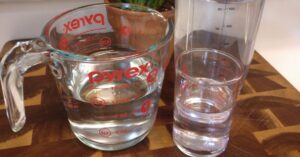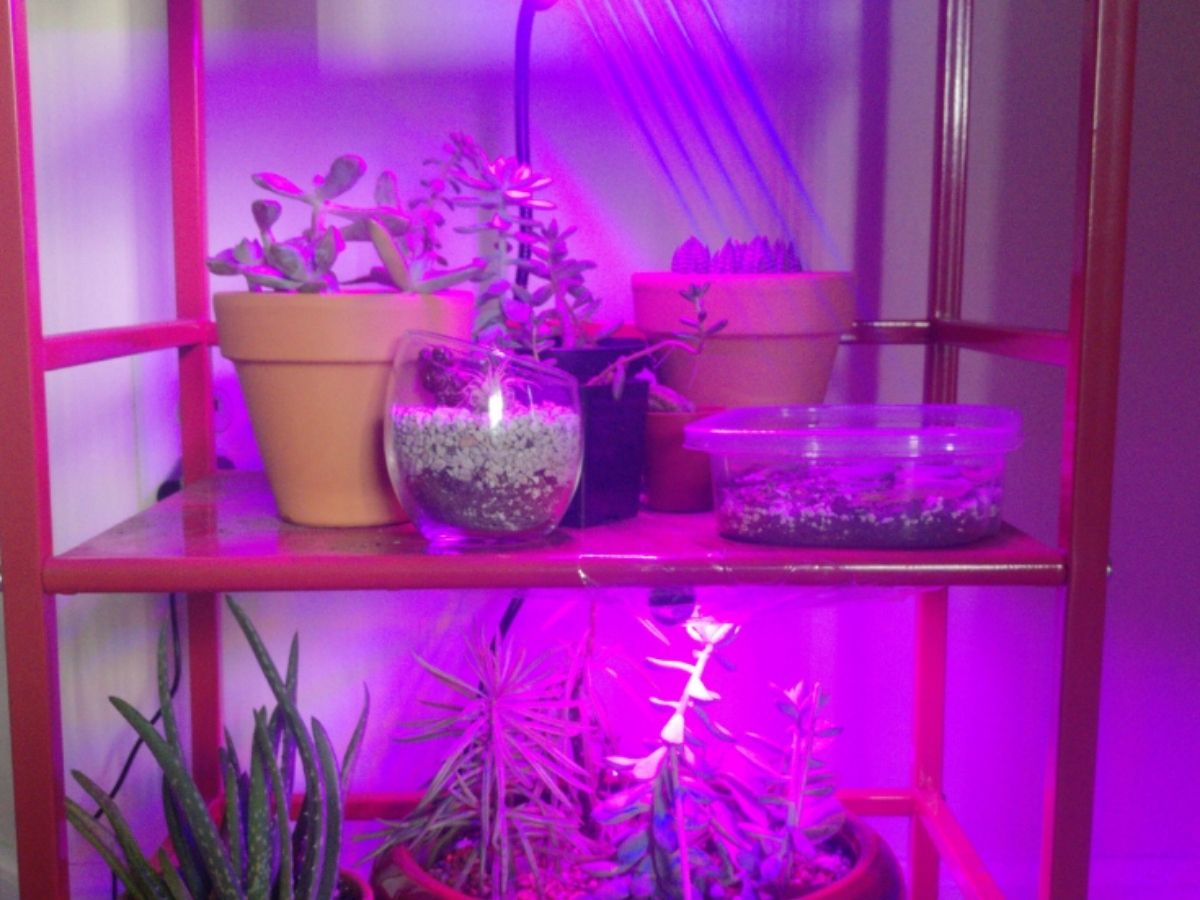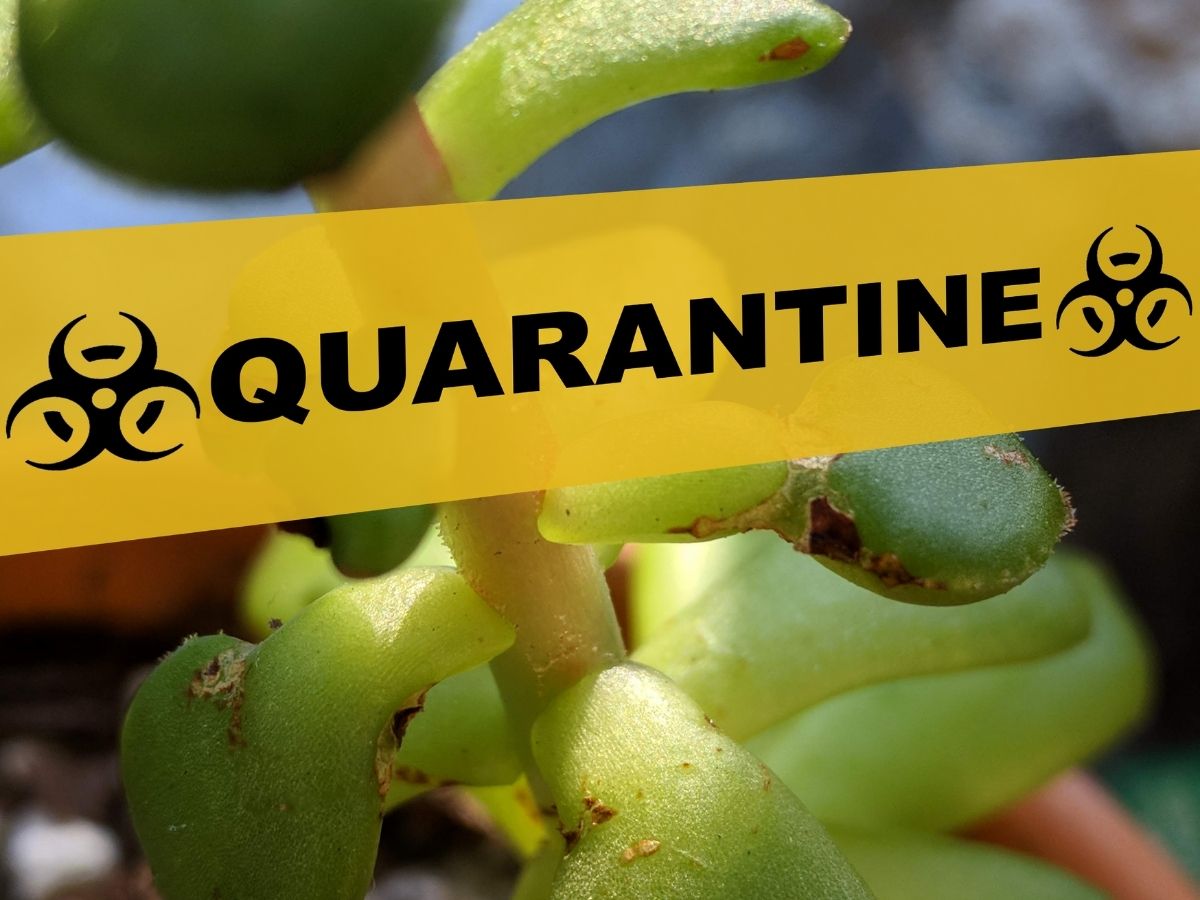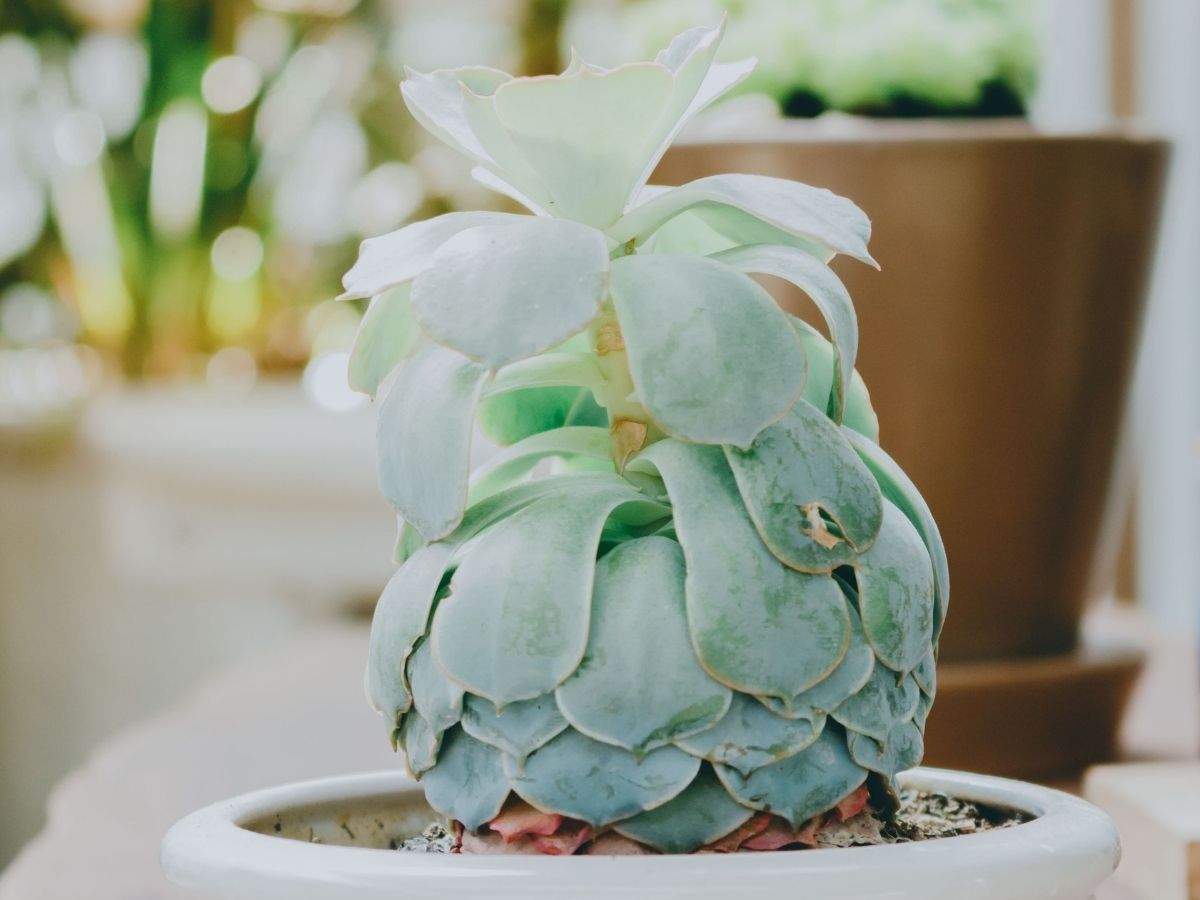The most common problem people have when starting out with succulents is overwatering. Imagine a cactus in the wild. Where do you see it?—probably some sandy expanse, right? Succulents and cacti are typically desert plants, and as such they’re adapted to living in dry, arid environments. They are xerophilic, and aren’t used to receiving lots of water.
Overwatering can cause your plants to die pretty quickly. Too much moisture in the soil:
- causes root rot
- prevents plants from absorbing nutrients properly
- attracts garden pests, and makes your soil a great breeding ground for them
- promotes bacterial and fungal growth
Signs and symptoms of overwatering

- Wilting—succulents may become visibly sad and droopy looking
- Yellowing leaves (chlorosis)
- Edema—blisters and bumps that leave permanent scars on leaves
- Leaf drop—even healthy looking new growth may begin falling off the stems.
- Squishy stems and leaves
How to avoid overwatering
1. Choose the right Pots

Use pots with proper drainage. Holes in the bottom of pots allow excess water to quickly drain. Porous materials like clay, concrete, and terracotta also wick away some extra moisture and are often ideal for succulent plants.
If your plant’s pots have proper drainage, then how frequently you water is more important than how much water you give them. Most succulents like for their roots to get a good soak, but have time to dry completely between watering.
2. Use the right kind of soil
Regular potting soil holds moisture well, which is great for certain plants, but for succulents and cacti you want a fast draining potting medium. If the soil compacts and doesn’t drain, then the roots sit in standing water and can quickly begin to rot. Once that happens, your plant’s health goes downhill fast.
Soil can be made to drain faster by using amendments.

Typically a good succulent soil will have two types of additives. There’s a non-organic component like coarse sand, perlite, turface, or pumice, which prevents compacting and creates spaces that allow for better penetration and aeration. Then, there are organic components like peat moss, bark, or coconut coir (shredded husks). The organic additions hold onto some moisture and nutrients to sustain your plants.
Premixed cactus and succulent soils are available for purchase, but even these can often be improved upon with soil amendments. For especially dry-loving plants you can make a “gritty mix” with almost no soil or organic components.
3. Measure your water or moisture
Measure how much water you give

Using a marked pitcher or measuring cup can help you control how much water you’re giving your plants. This is especially helpful if you are using pots that don’t have drainage. How much you give your plant can vary a little depending on soil type and amendments, but generally you should give it about 1/2 as much water as there is soil in the pot. For reference, a standard 4″ clay or plastic pot has a volume of about a pint (so would only need about 1 cup of water), and a 5-6″ pot has a volume of roughly one quart (could require up to 2 cups of water).
Measure soil moisture
You can measure the moisture in the soil before watering again. You can do this in several different ways depending on what works best for you
- The heft test. Pick up the pot, it should feel extremely light when the soil has dried compared to right after it’s been watered. Only water when it’s at it’s lightest.
- Tactile testing. Feel with your fingers, but keep in mind that just because the very top feels pretty dry doesn’t mean there’s not a lot of moisture below.
- Use something as a dip stick. I’ve been using a wooden kebab skewer in much the same way you might use a toothpick to test if a cake is done baking. With a dry skewer poke down to the bottom of the pot and give it a few seconds to absorb any moisture. If it’s visibly darker and has moist soil sticking to it when you pull it out, you could wait a bit longer before watering.
If you are the type of person who appreciates having a gadget for everything, or doubt your own assessment then check out soil moisture meters like this one from Amazon. There are several options available with extra features from around ten dollars.
4. Set a watering schedule

If you can learn the rhythm of your plants, then you could avoid some worry by keeping your watering to a routine schedule. Typically potted succulents need to be watered weekly to once every few weeks.
Make sure to be aware that some succulents might need to be watered more or less frequently than others. To help stick to your schedule—and not worry about remembering if you watered your plants last weekend or the one before—you could mark your calendar or set a recurring reminder on your phone or computer.
5. Mist with a spray bottle

Using a spray bottle could give you great control of how much water you give your succulents, and where you want it to go. Some people recommend misting your plants, but others advise against it
Here’s the issue, spraying the leaves and stems of plants can promote unwanted aerial root growth (hard leaved plants like haworthia/haworthiopsis are less susceptible to this). Water on the leaves could potentially cause mildew. Also, when misting you’ll probably have a tendency to want to water more frequently, and might risk not allowing the soil dry enough
If you do choose to mist your plants, aim for the base of the main stem and let the plant do its own job at getting that moisture to the leaves, after all that’s a succulent’s forte.
6. Be aware of dormancy periods
Many succulents enter a dormant period in the cooler seasons, when the days get shorter. During dormancy, plants will generally grow slowly, and not require as much water. If you were watering once a week you might end up only needing to water once a month. Keep an eye on their health and try to wait until the plants start to look a little thirsty (just barely deflated or shriveled). Some choose to skip or minimize the dormant overwintering phase by keeping plants indoors and using the aid of grow lamps.
7. Be especially careful with these plants


Some succulents are extremely sensitive when it comes to getting too much water. These include Lithops (Living Stones), Mesembs, and several species of cacti. One of the first succulents I killed was a Titanopsis that was sharing a pot with some less sensitive plants.
With these plants its advised to wait until they start to look a little shriveled, or with lithops water only when the tops start to get a little bit concave.
It’s better to err on the side of too dry, than too damp—Shriveling plants can often be brought back to life with some water and attention, but when root rot starts, there’s usually no going back without some cutting and re-potting.
Are these tips helping you? If so I hope you’ll like or share this post. Do you have any tips of your own?—Please share them in the comments below


















